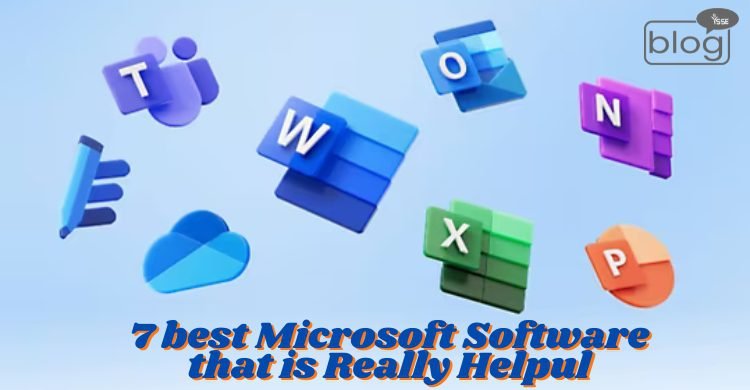Microsoft offers a suite of software applications that have become integral to personal and professional tasks. These applications are designed to enhance productivity, streamline communication, and facilitate seamless collaboration. Many of you may have questions like:
“Why should I use Microsoft software in my daily life?”
“Which Microsoft software is right for me?”
“What are the advantages of using Microsoft software over others?”
So here, we’ll explore seven of the best Microsoft software applications and their key features.
- Microsoft Word:
Microsoft Word is a versatile word processor widely used for academic writing, including essays, research papers, and presentations. Its user-friendly interface, automatic spelling and grammar checks, extensive formatting options, and collaboration tools like track changes make it an indispensable tool for various writing tasks.
MS Word’s built-in reference manager simplifies citation and referencing, while templates aid in document structure.
- Microsoft Excel:
Excel, part of the Microsoft Office Suite, is a powerful spreadsheet tool used for data organization, calculations, analysis, and reporting. It goes beyond basic tasks, supporting functions such as data entry, financial accounting, budgeting, and automation of repetitive tasks.
Excel’s flexibility makes it suitable for personal and business needs, offering a range of features for effective data management and visualization.
- Microsoft PowerPoint:
PowerPoint is a presentation program used to create slideshows with text, graphics, and multimedia elements. It allows for real-time online presentations and features custom animations, photo and video integration, webpage saving, and the ability to embed YouTube videos.
PowerPoint is a standard component of Microsoft Office, providing a dynamic platform for conveying information in a visually appealing manner.
- Microsoft OneNote:
OneNote is a comprehensive note-taking program that gathers handwritten or typed notes, drawings, screen clippings, and audio commentaries. It offers a flexible platform for capturing and organizing ideas, supporting various input methods across devices.
Users can type notes, record audio, sketch ideas, add pictures, and organize content into notebooks and sections.
OneNote ensures seamless synchronization across devices and enables collaboration by sharing notebooks with others.
- Microsoft Outlook:
Outlook is a personal information manager that includes an email client, calendar, task manager, and address book. It is widely used in businesses for its versatile features, such as efficient email management, calendar tracking, contact management, and task assignment.
Outlook’s search function, accessibility on multiple devices, and integration with other applications like- Skype or Teams contribute to enhanced productivity and communication in a business environment.
- Microsoft OneDrive:
OneDrive is a file hosting service that allows users to sync and access files from various devices through a web browser or mobile app. It offers advantages such as immediate data access, strong security measures, easy file sharing, and efficient bandwidth limiting.
OneDrive is particularly beneficial for businesses, providing sizable storage space, reliable uptime, flexible sharing with encrypted security, easy file accessibility, and efficient document management.
- Microsoft Teams:
Microsoft Teams is a collaboration platform that combines workplace chat, meetings, notes, and attachments. It has gained prominence as a leading tool for remote collaboration, especially during the COVID-19 pandemic. Here are four reasons why it is considered the best collaboration software:
- Enhances employee engagement by providing simple, flexible, and effective communication and collaboration tools.
- Improves productivity by enabling extensive collaboration from remote locations and across multiple devices.
- Reduces costs by preventing information silos and minimizing the risk of missed communications.
- Empowers employees to be more flexible in their work, contributing to a dynamic and adaptable work environment.
Ultimately, Microsoft’s suite of software applications offers a comprehensive set of tools for individuals and businesses to enhance productivity, streamline communication, and facilitate collaboration.
Whether it’s creating documents, analyzing data, giving presentations, taking notes, managing emails, storing files, or collaborating with teams, Microsoft’s software applications provide versatile solutions for various tasks and requirements.
To read more blogs like this, click here.
Tasrin Jerin Mim
Intern
Content Writing Department
YSSE

